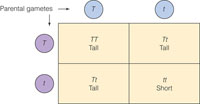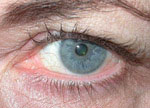| |
History of Thought: "The Search for Human Origins"
|
| |
Note: The little numbers in the lefthand column
refer to pages of the text that have additional information
slides: 04 begin here
|
|
pp. 20-36
|
- Major Periods in The History of Physical Anthropology
|
| |
- Pre-Scientific Period (to 1859)
|
pp. 34-36 |
- Period of Evolutionism and Concern Over Races (1860--ca. 1940)
|
| |
- The Period Since WWII
(See"Major
Characteristics of Modern Physical Anthropology, Primatology, and
Paleontology.")
|
| |
|
pp. 20-21
|
- Major Problems in The Pre-scientific
Period
- Humans were thought to have had ancient origins
corresponding to the time of the creation of the earth
- Earth was thought of as a young place
- creationism
- catastrophism (George Cuvier)
- evolution
|
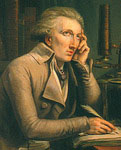
George Cuvier
Understanding Humans, 10th Ed., p. 25
|
| |
|
|
|
- Older Evolutionary Ideas
- Example: Titus
Lucretius Carus (ca. 99-55 B.C.)
- Example: Genesis
Account of Creation from the Old Testament
|
| |
|
p. 21
|
- Archbishop
James Ussher of Armagh, Ireland (1581-1656)
- In 1650 determined that the Earth was created in 4004 B.C.
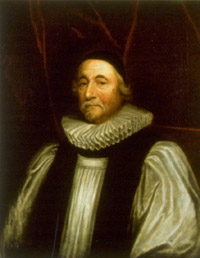
|
| |
|
p. 21
|
- Widespread Idea of the 17th and 18th
Centuries
|
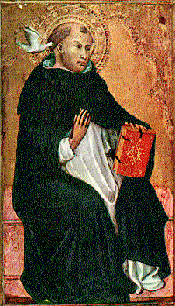
St.
Thomas Aquinas
(1225 - 1274)
|
God
Angels
[Pope -- for Catholics]
Kings/Queens
Archbishops
Camilla Parker Bowles
(Princess Consort,
Her Royal Highness the Duchess of Cornwall)
Dukes/Duchesses
Bishops
Marquises/Marchionesses
Earls/Countesses
Viscounts/Viscountesses
Barons/Baronesses
Abbots/Deacons
Knights/Local Officials
Ladies-in-Waiting
Priests/Monks
Squires
Pages
Messengers
Merchants/Shopkeepers
Tradesmen
Yeomen Farmers
Soldiers/Town Watch
Household Servants
Tennant Farmers
Shephards/Herders
Beggars
Actors
Thieves/Pirates
Gypsies
Animals
Birds
Worms
Plants
Rocks
|
|
Notes:
- For Catholics, the Pope is at the same
level or above the King.
- Speaking of clergy, the Church hierarchy
is actually separate from the secular hierarchy. I
have inserted
churchmen into the Chain at the best approximation
of their ranks.
- In terms of deference, personal threat
matters. In other words, you might bow to a pirate
even if
you technically
out-rank him, because he is armed and you are
not!
- Office also makes a difference. The
King's most trusted advisor gains deference greater
than that
to which his
rank entitles him.
- The term "Yeoman" is used here to distinguish
a farmer who owns his own fields from one who is
merely
a tennant
on someone else's fields. The term does have
several other meanings in other contexts. Be thou
not confused!
- Children have, in general, a rank one
or two beneath their parents while they remain minors.
- There are as many gradations among
the non-human orders as among people. A complete list
would simply
be too long
to reproduce!
For more on how the links of
the Great Chain interact, including some good practical
advice, check out
this article. |
|
| |
|
pp. 22-233 97-103
|
- Karl
von Linné (Linnaeus), 1707-1778
- Provided a system of biological classification in Systema Naturae, 1758
|
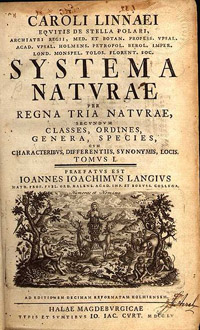
|
|
|
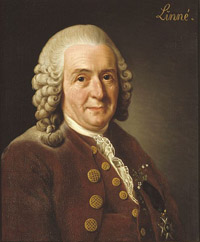
|
|
p. 97 |
| Kingdom
. . . |
Genus |
Species |
Variety |
Common Name |
| Animalia . . . |
Homo |
sapiens |
sapiens |
"modern" humans |
| Animalia . . . |
Gorilla |
gorilla |
gorilla |
"gorilla" |
| Animalia . . . |
Homo |
erectus |
pekinensis |
"Peking Man" / "Peking
People" |
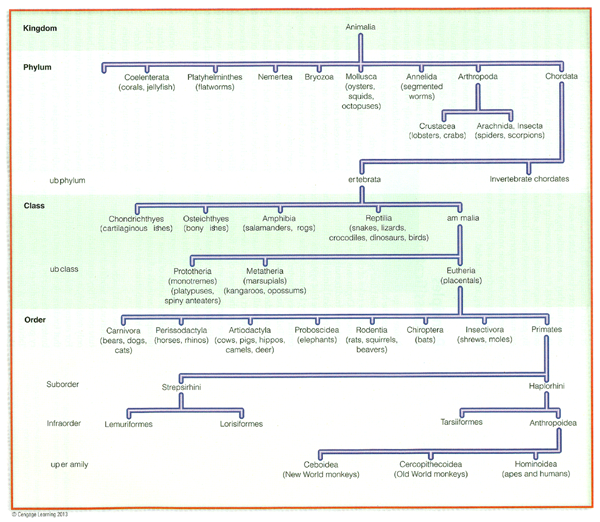
Classification chart, modified from Linnaeus.
Understanding Humans, 11th Ed., p. 97
|
| |
|
| |
- Early Discoverers of Prehistoric Evidence
|
![. . .The first published illustration of a hand ax. . . . (Hearne's [1715] edition of Leland's Collectanea 1:1xiv). This implement is described in the Sloane Catalogue: 'No. 246. A British weapon [sic.] found, with elephant's tooth, opposite to Black Mary's, near Grayes Inn Lane' (as quoted in J. Evans 1897: 581.) (right) The same hand ax reproduced [but not included here] as a woodcut in J. Evans, Ancient Stone Implements 1897: Fig. 451. . . ." (Frank Hole and Robert F. Heizer, An Introduction to Prehistoric Archeology, 3rd ed., New York: Holt, Rinehart, and Winston, 1973, p. 59.)](../images/axe1.gif)
Hand Ax, 1715
". . .The first published illustration of a hand ax. . . . (Hearne's [1715] edition of Leland's Collectanea 1:1xiv). This implement is described in the Sloane Catalogue: 'No. 246. A British weapon [sic.] found, with elephant's tooth, opposite to Black Mary's, near Grayes Inn Lane' (as quoted in J. Evans 1897: 581.) (right) The same hand ax reproduced [but not included here] as a woodcut in J. Evans, Ancient Stone Implements 1897: Fig. 451. . . ." (Frank Hole and Robert F. Heizer, An Introduction to Prehistoric Archeology, 3rd ed., New York: Holt, Rinehart, and Winston, 1973, p. 59.)
|
| |
|
| |
- Monsters . . .
| Kingdom . . . |
Genus |
Species |
Variety |
Common Name |
| Animalia . . . |
Homo |
monstrosus |
. . . |
"monsters" |
| Animalia . . . |
Gorilla |
gorilla |
gorilla |
"gorilla" |
| Animalia . . . |
Homo |
erectus |
pekinensis |
"Peking Man"
/ "Peking People" |
|
| |
|
pp. 25, 185 |
- James
Hutton (1726-1797)
Theory of the Earth, 1775
- first demonstrated the immense antiquity of the earth
|
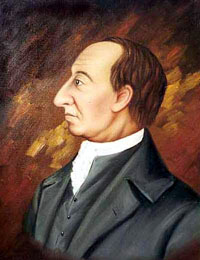
James Hutton
Understanding Humans, 10th Ed., p. 26
|
|
| |
|
pp. 25, 26, 71, 185
|
- Charles
Lyell (1797-1875)
- Principles of Geology, 1830
|
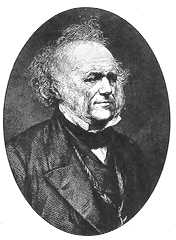 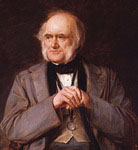
Charles Lyell
Understanding Humans, 11th Ed., p. 25
|
|
|
| |
|
|
|
|
| |
|
| |
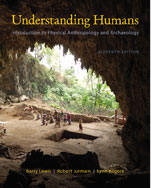
Slides: 06A begin here
|
pp.34, 48-57, 62
|
- Gregor
Johann Mendel (1822 - 1884)
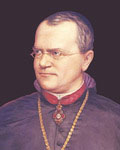
Gregor Mendel
Understanding Humans, 11th Ed., p. 48 |
| |
|
pp. 48-55 |
- inherited characteristics
|
pp. 23-24 |
|
| p. 34 |
|
pp. 48-54 |
|
pp. 42-45 |
|
|
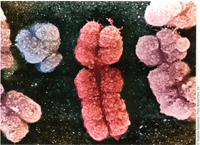
Scanning electron micrograph of human chromosomes. . . .
Understanding Humans, 11th Ed., p. 43
|
|
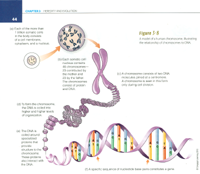
A model of a human chromosome. . . .
Understanding Humans, 11th Ed., p. 44
|
|
|
pp. 48-54 |
|
pp. 48-54 |
|
| |
|
| |
|
| |
-
Rediscovered Mendel's work on plant hybrids in
the spring of 1900
|
| |
|
| |
- Misconceptions of Darwin's Work
- Some thought his work was anti-religious
- Some thought he took the position that humans descended from
an ape
- “In the distant future . . .
light will be thrown on the origin of man and his history.” -- Origin
of Species, 1859
|


